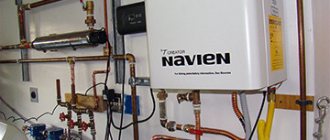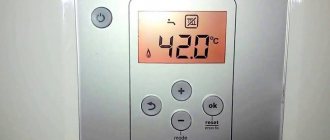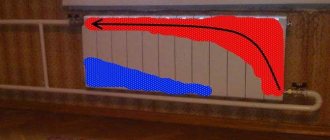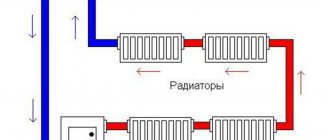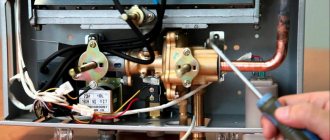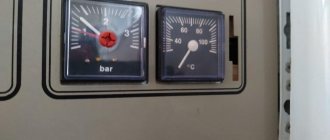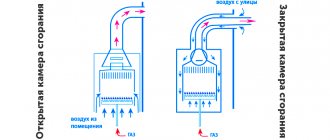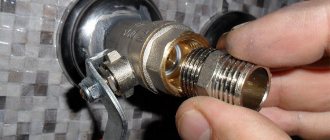Category: Tips Published 02/21/2016 · Comments: · Reading time: 4 min · Views: Post Views: 9,364
Hello, friends! Have you ever thought about how reliably your boiler is protected from overheating? Sometimes, when firing a solid fuel boiler, the coolant temperature has reached a critical value, but the fuel still continues to burn. This releases a significant amount of heat, which can have serious consequences both for the boiler and for the entire heating system as a whole.
The heating system with a solid fuel boiler is inertial. This positive quality of solid fuel boilers can play a fatal role if the coolant is overheated. In this case, it will not be possible to immediately stop the ongoing heating of the coolant. A particularly catastrophic situation arises if the heating system contains polypropylene or metal-plastic pipes. Their operation is not designed for such a high temperature, which will inevitably lead to depressurization of the system.
In this case, there is no longer any hope for a safety system consisting of an expansion tank, a drain valve, and an automatic air vent. It just protects the system from excess pressure. But, when the life of the expansion tank has already been exhausted, the growing pressure in the system causes the release valve to operate, and part of the coolant is discharged from the system.
It seems that the situation should improve, but it is only getting worse, because... a decrease in the volume of coolant leads to more intense boiling of water in the boiler. The temperature continues to rise, and now... But it is not all that bad. Boiler manufacturers have also foreseen this scenario. Modern boilers are equipped with devices that prevent the boiler from overheating. But we’ll try to figure out how effective they are in this article.
What layer thickness should there be for a single loading of coal into the boiler?
Before throwing coal, be sure to close the ash pit. The first layer of coal is laid with a thickness of 5-6 cm. After it burns out, a second layer with a thickness of about 15-20 cm is laid. Further layings also have this thickness.
Interesting materials:
How to erase putty in a diary? How to wash a linen suit? How to wash clothes with prints? How to wash a Cheburashka fur coat? How to wash hand-painted items? How to Stream from PS5? How to dry watermelon rinds in the dryer? How to dry arugula for the winter? How to dry carrot seeds? How to dry dried flowers in semolina?
Adjusting the temperature of a solid fuel boiler
The combustion process of solid fuel is a complex and highly inertial process, and therefore very difficult to regulate. However, albeit roughly, this process can be controlled by dosing the amount of air supplied to the combustion chamber.
The temperature of a solid fuel boiler is adjusted by changing the air supply to the combustion chamber of the boiler. There are two ways to make this adjustment:
- using a damper and thermostatic draft regulator;
- using a fan and automation (controller) smoothly changes its speed.
Both methods have the right to exist, however, the first case is cheaper, and the second makes it possible to achieve high control accuracy.
Air damper control is a variant of passive power control. In this case, air enters the combustion chamber due to the draft (rarefaction) created by the chimney.
This method assumes the presence of an air supply damper in the boiler. This damper can be located on the bottom door of the boiler or at the rear of it. In addition to the damper, the boiler must have a place with an internal thread into which the thermostatic draft regulator is screwed.
The draft regulator is connected to the air supply damper using a chain. This system works as follows - when the water temperature in the boiler approaches the temperature set on the draft regulator, the rod of the regulator's sensitive element is extended by an amount sufficient to cover the damper within its operating range.
However, the efficiency of this method of controlling the damper cannot be high, and the regulator does not provide high control accuracy. Since the process depends on many physical factors, for example, not every mechanical draft regulator can fully “lift” a heavy cast-iron damper, etc., therefore it is almost impossible to achieve accuracy and speed of regulation with such a system. The main advantages of this method are the low cost of the system and its energy independence (no electrical connection required).
Practical recommendations for setting the temperature of a solid fuel boiler using a thermomechanical draft regulator
First, you need to fully open the air supply damper (blower), heat the boiler and wait until the temperature on the boiler thermometer reaches 60 °C. After this, you need to set the air supply flap gap to about 1-2mm using the adjusting screw.
Next, we set the temperature on the draft regulator to 60 °C - either on the white scale or on the red one - depending on the mounting position of the regulator and tighten the chain until it stops sagging (with minimal tension). Now you should experiment with the temperature on the regulator handle and the temperature maintained by the boiler. Based on the test results, we adjust the length of the chain.
Adjusting the temperature of a solid fuel boiler using a fan and controller
The second way to regulate the temperature of a solid fuel boiler is to use a fan and a controller, and it can be attributed to the case of active control of the air supply. The essence of this method is to directly dose the amount of air entering the combustion chamber of the boiler. The actuator in this case is a fan that forces air into the combustion chamber. By changing the fan speed, you can smoothly and over a wide range change the volume of air entering the combustion chamber of a solid fuel boiler. The controller controls the fan. The essence of the control is to smoothly change the fan supply voltage, depending on the difference between the set temperature and the one currently in the boiler.
Let's look at the parameters that a standard controller can provide:
- the final temperature of the boiler is the set temperature that the automation must provide;
- Fan operation hysteresis is the temperature difference from the set one, within which linear control of the fan speed will occur (proportional law);
- minimum fan speed is the minimum speed in operating mode (minimum thermal power of the boiler);
- maximum fan speed is the speed in maximum power mode according to the controller (maximum thermal power of the boiler);
- purge time is the time the automation turns on the fan when the boiler has reached the set temperature so that the flame in the boiler does not go out;
- pause time between blowdowns - so as not to overheat the boiler when it reaches temperature;
- heating system pump activation temperature – the pump will turn on only when the set temperature is reached;
- Pump hysteresis - the difference showing how many degrees from the set temperature the water temperature in the boiler can drop without turning off the pump. Determines the temperature at which the pump will turn off;
- correction of temperature indicators - if the sensor is not mounted correctly and its indicators are incorrect;
- boiler burnout temperature – the temperature at which there is no longer any fuel in the boiler and the fan turns off;
- test mode allows you to check the operation of the pump and fan manually.
- Controller
- Solid fuel boiler
- Charge fan
- Emergency temperature sensor
- temperature sensor
- Central heating pump
- Heat sink-radiator
As you can see, this method of adjusting the air supply has the ability to more accurately provide the specified temperature of the coolant in a solid fuel boiler . However, if the air supply door and the blower are sufficiently sealed, this automation system can lead to extinguishing of the boiler in the absence of power supply, because a gravity air supply valve is mounted on the fan; when the fan is not working, the valve does not allow air to be supplied to the combustion chamber.
Pyrolysis boiler
Connoisseurs of high technology may be interested in pyrolysis boilers, the cost of which, although higher than usual, is not comparable in productivity to traditional systems. The owner of such a boiler saves significant amounts on firewood, since the process includes the stage of burning gas released from solid fuel. With one stack of firewood, such a boiler can operate for more than a day.
To properly heat a pyrolysis boiler, you should put a portion of wood chips and a large piece of dry paper into the scorching door, and firewood and a small amount of coal on top into the loading door. You should light a piece of paper, from which the combustion process will spread further. The door can be closed as soon as the wood chips ignite.
Pellets and wood briquettes
The Scandinavians were the first to come up with the idea of turning sawdust into fuel. Later, other European countries followed suit. In our country, pellets have long been produced only for the European market, so still only a few homeowners know what they are.
Pellets are divided into classes, and their price depends on this. For example, for wood pellets of the first class (with a minimum content of bark and moisture) you will have to pay 110 euros per ton, for the second class -100, for the third, the lowest - 85-90. The lower the class, the more ash is formed after combustion, the greater the volume of fuel required for the season. To heat an average-sized house, about 3-4 tons of pellets are purchased per year. The main problem is to find a dry and ventilated room to store them.
The problem is solved by the switching valve
The switching valve works as follows: when the coolant heats up to 95 degrees, the thermostatic valve opens, and cold water begins to flow from the water supply into the boiler, and hot water is discharged into the sewer. Gradually the temperature of the coolant decreases.
For reliable operation of the switching valve, it is necessary not only to have water in the water supply network, but also to have sufficient pressure to operate the valve. In addition, constantly adding hard water to the system leads to its rapid slagging.
Making a wood-burning boiler with your own hands
Homemade boiler
Is it difficult to make a wood-burning boiler for your home with your own hands? The main condition for this design is the thickness and grade of steel used. In factory models, the outer casing is made of heat-resistant steel with a thickness of 1.5 mm. For a heat exchanger, these parameters should be larger - from 2 mm.
The best option is to create a welded structure, which will be similar in shape to the factory models. However, if you calculate the labor intensity of the work and the cost of materials, the difference between purchasing and making it yourself will be small. Therefore, as an alternative to wood stoves for homes with water heating, simple steel barrels are often used. The main condition is the thickness of their walls - from 1.5 mm.
For production you will need a container of about 200 liters. It is cut lengthwise and a partition is installed inside. Its length should be less than the length of the barrel. This is necessary for the installation of grates.
Then holes are cut on the end side for mounting the doors. They should be selected in advance so as not to make a mistake with the sizes. To remove carbon monoxide, a chimney pipe is cut into the back of the structure. Its diameter can range from 50 to 100mm.
However, judging by the reviews of such a wood-burning heating boiler, the following disadvantages can be noted:
- Low efficiency rate;
- Heating of the case, which can lead to burns when touched;
- Short service life.
Similar designs are used for heating small utility rooms - garages, warehouses, etc. For your home, it is best to purchase a high-quality factory model. It will fit modern wood heating schemes.
| Boiler model | power, kWt | Cost, rub. |
| Buderus Logano G221 | 20 | 69900 |
| Dakon DOR F 24 | 24 | 60300 |
| Proterm DLO 30 | 24 | 58450 |
Collector wiring
In a long, highly branched pipeline of a large cottage, one pump may not be enough. In this case, two or even more of them are installed, for each circuit. Separately heated floor, radiators, hot water supply. Since the temperature of heated floors is initially low (within 50 degrees), you can install a pump at the entrance to the circuit.
The optimal wiring option for a large house with several circuits is collector (radial). Each circuit receives coolant from the boiler through its own pipe. The heat is distributed evenly, the liquid does not cool down, consistently passing through the entire system.
The collector includes at least two combs, forward and reverse. The corresponding lines from the boiler are connected to the ends of the combs, and the forward/return pipes of the circuits are connected in parallel to the fittings on their bodies - radiators and heated floors, different floors, utility rooms, DHW - each with its own temperature regime.
Collector
A pressure gauge and a safety valve are installed at the entrance to the manifold, an air vent is installed on the opposite side on the “hot” comb, and a tap is installed on the “cold” side to drain the coolant from the system. The pipes are equipped with control valves - this is one way to set different temperatures in the circuits. A large house may have several pairs of combs.
Another way to set different modes is a hydraulic arrow. A vertically placed section of large cross-section pipe is connected to the direct pipe and the return pipe of the boiler, and circuits are connected to the body at different heights. The higher the connection, the hotter the coolant.
In small circuits, the temperature can be adjusted as follows: the free ends of the combs are connected by a bypass to a shut-off valve. When the valve opens, cool water from the return pipe is mixed into hot water from the supply pipe.
We heat it with coal.
When choosing coal as a fuel for the boiler, carefully read the instructions to see if this type of fuel is suitable for your boiler. If no problems arise, we learn.
To produce the best level of heat, coal fuel will require a special firebox - a shaft with vertical walls and a grate. The firebox must be high, from the arch to the grate it must be at least 50 cm. It is recommended to make the blower and combustion doors of cast iron, strictly seal them, the optimal distance between them should be about 21 cm. When burning coal, you should remember that a new portion should be added only when when the first one has confidently flared up, each time it is necessary to close the ash door, and also not to allow the coal to burn through to the grate, maintaining an even layer.
It is worth remembering that coal, coal grades PZh and Zh, PS and SS, as well as grade T require wetting according to the instructions. And only anthracite does not require wetting, if only to reduce dust emissions.
For optimal combustion, the coal should be chopped into pieces measuring 30-50 cm.
Heating system installation
Installation of the heating system of a country house is carried out in several stages:
- project development, obtaining permits from the relevant authorities;
- purchase of materials, equipment and preparation of tools;
- insertion into a gas pipeline that runs along the street and through which gas is supplied to residential buildings;
- preparing a place for a gas boiler, laying out pipes;
Installation of gas equipment
boiler installation; filling the system with coolant; diagnostics.
The main criterion by which the amount of materials is calculated and the model of heating equipment is selected is the area of the house. The larger it is, the more powerful the device will be needed. For a small house, a small-sized boiler is suitable, which can be installed in the bathroom or kitchen. For a cottage or two-story mansion, it is better to choose a large, powerful device.
A heating system in a private home installed in accordance with all the rules will function for a long period. Before starting installation work, you should familiarize yourself with the heating diagram and the rules for installing heating equipment.
Maximum net power
This characteristic can be called one of the most important. When choosing a boiler, it is the first thing people pay attention to. This is not surprising, because the area of the room that the boiler can heat depends on the power.
The Zota company produces boilers with capacities of 15, 25, 40, 63 and 100 kW.
The range of capacities of pellet boilers is large, which allows you to choose a boiler for your needs, be it heating a private home or an industrial premises.
It is generally accepted that a boiler with a power of ten kilowatts can heat a room of
100 square meters.
Schemes of water heating with a solid fuel stove
The stove is a traditional source of heat in a private home. However, for buildings with a large area, installing classical models will not be practical. This is due to the relatively low efficiency and limited heat distribution. Therefore, a solid fuel stove with a water heating boiler is increasingly being installed.
Steel furnace with water heat exchanger
Structurally, factory models are similar to boilers, but have a number of features. First of all – small sizes. Since the main task of a solid fuel stove with a water heating boiler is to provide heat supply over a relatively small area, the maximum power of such structures is usually 9-10 kW. This disadvantage is compensated by the affordable cost and ease of installation. Unlike solid fuel boilers for water heating, the stove can have an additional function - a hob. That's why they are installed in the kitchen.
Most often, steel stoves with a water heating circuit are purchased to supply heat to a summer house or small country house. Due to their unique properties, these heating devices have a number of advantages:
- Small sizes. They allow you to place the structure in a limited kitchen area in the house;
- Selecting the type of solid fuel. To operate a solid fuel stove with a water heating boiler, you can use coal, firewood, peat or fuel briquettes;
- Easy installation. To install the stove, just connect it to the heating system pipes.
When choosing a furnace with a water circuit, you should pay attention to the characteristics of the material. The body must be made of steel with a thickness of 2 mm or more
In a heat exchanger for long-term operation, the manufacturer must use heat-resistant sheet steel with a thickness of 3 mm or more.
Gas heating system diagram
The heating system of a private household running on gas necessarily includes a boiler, batteries, an expansion tank, a circulation pump and connecting pipes. The coolant heated by the boiler circulates through pipes and radiators, giving off its heat to the environment and returning again to the main heating unit. The movement of water is usually ensured by a forced method due to the pressure pumped by the pump.
To increase the efficiency of water gas heating at home, its circuit can be supplemented with shut-off valves, Mayevsky taps, a temperature sensor and other elements. The expansion tank is an integral component of any heating system, both with forced and natural circulation.
The gas heating scheme with natural circulation of water is due to the peculiarity of installing the pipeline at the required angle, as well as the use of pipes with a large diameter and the installation of an expansion tank at the highest point of the system. In this case, the heating wiring diagram can be performed in two ways:
- Beam method, which is easy to carry out repair work, as well as high efficiency. But you will have to spend money on pipes due to the large size of the pipeline.
- The tee method is slightly cheaper due to the smaller number of pipes. But it will not be possible to adjust individual heating elements, since this is simply not provided for in the circuit.
If the heating system is connected directly to the central gas pipeline, then human intervention in its operation will be limited to changing the temperature parameters.
Firewood quality
The best firewood for a solid fuel boiler has always been oak firewood. Due to its high quality, these raw materials belong to the elite class. The cost of oak firewood is high, so it is not affordable for everyone. But such firewood is often indispensable when it comes to the taste of baked bread, pizza or other pastries. Here oak logs are simply irreplaceable.
Let's look at the characteristics of firewood from different types of wood:
- Oak: an elite, expensive variety. Burns powerfully, giving off a huge amount of heat;
- Birch: Best quality/cost ratio;
- Alder: excellent firewood, the house warms up quickly. In addition, the ancestors considered alder firewood to be “medicinal”, since in a house heated with its help, people were less likely to get colds;
- Pine: hot and aromatic firewood that burns well due to its resin content.
We use a cooling heat exchanger
The principle of its operation is based on cooling heated water in the heating system. A cooling heat exchanger is installed in the boiler itself or at its outlet. As soon as the water temperature reaches 95 degrees, the valve opens and cold tap water begins to flow into the heat exchanger, reducing the temperature of the coolant. For safe operation of such a system, a large volume of cold water is required. Lack of water in the water supply network when the boiler overheats can lead to an emergency.
The best known manufacturers and models: characteristics and prices
Cewal RQ-10
One of the simplest and most budget-friendly mechanical thermostats from an Italian manufacturer. Despite its low cost, it is known for its build quality and reliability. The instructions for the device provide a schematic and detailed description of the installation and connection algorithm. The only drawback is the large hysteresis - up to 1.5-2.5 degrees, which is typical for all mechanical thermostats.
Cost: 800-1,150 rub.
SKAT Teplocom TS-2AA/8A
A more advanced thermostat with an error of up to 1°C. It has a micro-display for indicating temperature, powered by 2 AA batteries (enough for 10-15 months). It features an economical night mode with automatic temperature reduction by 4°C and frost protection.
Cost: 1,450-1,600 rubles.
Danfoss ECtemp Next Plus
One of the best thermostats for an electric heating boiler in terms of price-quality-functionality. It is a modern electronic programmable thermostat with a stylish design and wide functionality. In addition to the built-in one, it has an external wired temperature sensor for heated floors, which allows control separately from the air temperature in the room. Wide functionality, programming and the presence of ready-made modes (“night”, “away”, etc.) allow for maximum energy savings.
It is also distinguished by its safety: it has protection against overheating and freezing, child locking, and monitoring the health of temperature sensors. According to installation practice and owner reviews, there were no cases of malfunction. To avoid malfunction, during installation it is necessary to accurately fit into the grooves of the plug connector.
Cost: 3,420-3,900 rubles.
TEPLOLUX MCS-350
A modern multifunctional premium thermostat with a built-in Wi-Fi module and the ability to control using a special application for a smartphone. It features one of the most extensive functionality, an informative touch screen (with automatic locking) and a stylish design. The kit includes both built-in and remote temperature sensors for simultaneous or separate control. Additionally, you can connect up to 32 temperature sensors.
There are template energy-saving operating modes and weekly programming, as well as energy consumption statistics. The connection must be made via a modular contactor.
Cost: 5,900-6,200 rubles.
